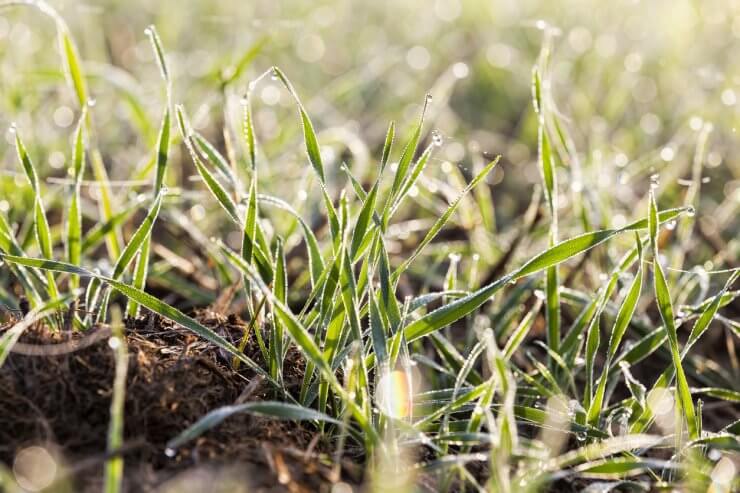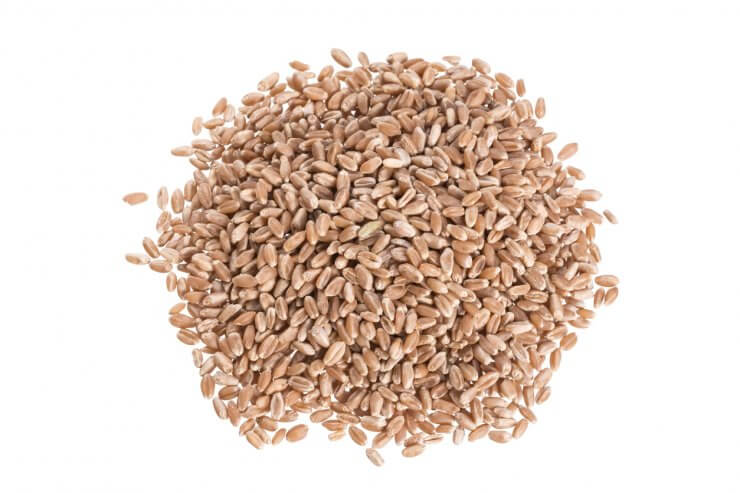
Winter wheat with ice crystals in the early morning
Spring Wheat and Winter Wheat
There are two main types of wheat: spring wheat and winter wheat. As their names suggest, spring wheat is planted in spring for late-summer or fall harvest. Winter wheat is sown in the fall, lives through the winter, and then is harvested in the summer.
Wheat Classes
Spring and winter wheat types are further divided into six classes according to hardness (hard vs. soft) and color (red vs. white). It’s important to know these classes because they have different purposes that will affect how you use the wheat after harvesting.
In general, hard reds have the highest percentage of protein, which makes for greater dough elasticity. Hard reds are mostly used for baking bread.
Soft whites, on the other hand, have the least percentage of protein and are best for lighter types of baked goods, like cakes, pastry dough, and cookies.

Hard red winter wheat berries
Hard Red Winter: This class of wheat is extremely versatile and lends itself well to all-purpose flour, loaves of hearth breads, and most everyday baked goods.
Hard Red Spring: The ‘aristocrat’ of wheat, hard red spring is often used for designer types of breads, croissants, bagels, and blending with other wheats to enhance the flour.
Soft Red Winter: Soft red winter wheat flour makes great cookies, crackers, pretzels, baguettes, and other types of baked goods that require a little crunch.
Hard White Wheat: The newest wheat class, hard white is the go-to for Asian noodles, tortillas, flatbreads, and pan breads.
Soft White Wheat: Soft white is a low-moisture wheat that creates a tender flour suitable for Middle Eastern flatbreads, cakes, and pastries.
Durum: The hardest of all wheats, durum has a high percentage of gluten, making it perfect for homemade pasta, couscous, and Mediterranean breads.
Of course, many bakers use blended flours to suit their particular needs.
Which type of wheat have you grown? Do you have a preference? Please share your opinion.


 Previous
Previous

